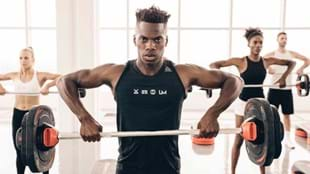The focus on how many calories we burn in a training session is on the rise, thanks to the increased prevalence of wearable devices. But does this focus on calorie burn really tell the whole story about what we are getting out of our training? Put simply - if you open up the car bonnet, what else is going on in the machine?
Previous observations suggested that there must be more benefits reaped from a resistance training class such as BODYPUMP™ than simply burning calories. As Instructors, we know that this type of training promotes the growth of lean muscle and fast changes in body composition; we see these results both in ourselves and our participants, despite the fact that the calories burned in this format are often lower than the likes of BODYATTACK™ and BODYCOMBAT™. However, until now, we’ve never had the research to prove that this type of training elicits any benefits other than the number of calories burned during class.
So here’s the question: if you burn 300 calories in a BODYPUMP class, is this the same as burning 300 calories doing steady state training on a bike?
Twelve healthy females were recruited to participate in a study to answer this exact question. First of all, they did a BODYPUMP session. The research team measured the calories they burned during that class and set the intensity for the cycling session accordingly, to ensure that calorie expenditure and duration was matched in both workouts. Blood was taken from the participants before and after BODYPUMP, and before and after the cycling session, to measure their hormonal response to the two workouts.
On all counts, the results of the study show that the body has a far greater response to BODYPUMP than it does to a calorie-matched, steady-state cardio workout. When blood lactate levels were examined, they were a whopping 81 percent higher after BODYPUMP than after the cycling session, while Human Growth Hormone (HGH) was an impressive 56 percent higher.
Bryce Hastings, Head of Research at Les Mills International, explains: “Human Growth Hormone oxidizes fat and builds lean muscle tissue. That’s important for ongoing calorie expenditure because muscle burns more calories than fat. The more muscle you can build, the more calories your body will burn long-term. Combine that with increased fat loss and the result leads to rapid changes in body composition.”
The increase in blood lactate is also great news, as it is this accumulation of lactate from exercise that sparks the response in HGH. In fact, it’s widely accepted that exercising at an intensity above the lactate threshold for a minimum of 10 minutes within a workout is the greatest stimulus there is to the secretion of HGH.
Simply put, the beneficial effects of certain types of exercise - such as resistance training and high-intensity interval training – continue to occur long after the actual workout session has finished.
So what does this mean for us?
As Instructors, it gives us the assurance that the workouts we are leading really are guaranteed to deliver the results. It enables us to stand on stage and feel confident in telling our members that this workout actually WORKS. You know that point after the Back Track in BODYPUMP where you feel like you’ve just run a marathon? Yeah, that spike in intensity is going to ensure that we will have ongoing changes to our body composition long after the workout is over. How about that point in the Shoulder Track where it feels like you can’t do one more rep because your delts are on fire? It’s that accumulation of blood lactate that’s going to help take your fitness and physicality to the next level.
This research places us at the cutting-edge of exercise research and explains the science behind those amazing results we see in BODYPUMP – every day. So when your participants ask you how they can lose weight or tone up fast, remember – it’s not just about the calories you burn in class. There’s a whole lot more going on behind the scenes than simply the reading on your activity tracker.
For some ideas on cues to say in class and resources to share this research with your participants, click here.
For more information on this or other research head to lesmills.com/research.



